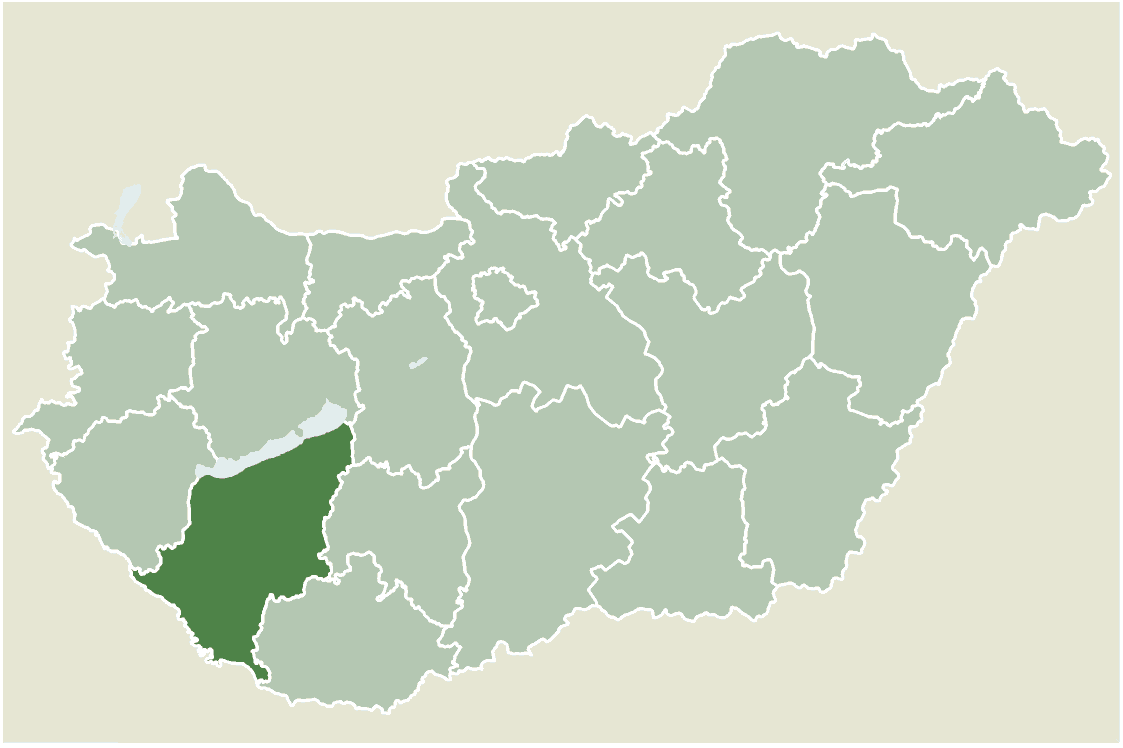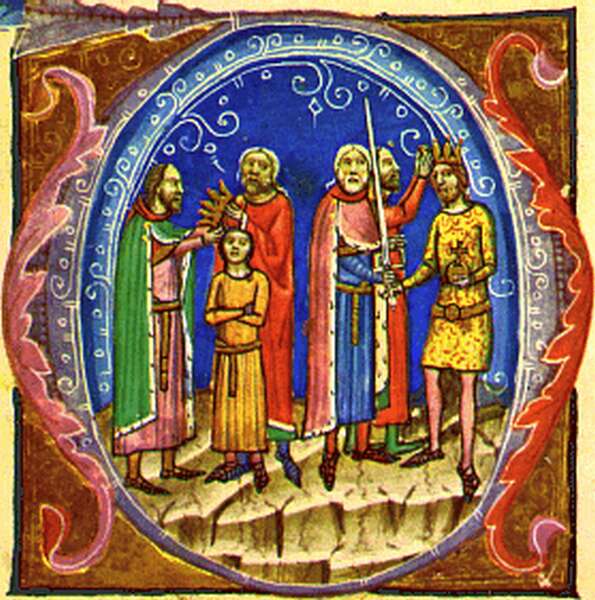|
Karád
Karád ( hr, Karadin) is a village in Somogy county, Hungary. The settlement is part of the Balatonboglár wine region. Etymology Its name derives from the Turkish person name, ''Kara'' ( hu, fekete, en, black). He could be the first owner of the settlement. The same applies to Kára. History According to ''László Szita'' the settlement was completely Hungarian in the 18th century. Culture The Hungarian folk songs Fót hátán fót, egy üngöm vót (in 1938) and A karádi faluvégen (in 1933) were collected in Karád by Gyula Dávid Gyula Dávid (May 6, 1913 – March 14, 1977) was a Hungarian violist and composer. Dávid studied composition with Zoltán Kodály at the Franz Liszt Academy of Music. He played viola with the Municipal Orchestra in Budapest from 1940 to 19 ... as well as Rén a bárány (in 1953) by ''László Vikár''. External links Street map (Hungarian) References Populated places in Somogy County {{Somogy-geo-stub ... [...More Info...] [...Related Items...] OR: [Wikipedia] [Google] [Baidu] |
Balatonboglár Wine Region
The Balatonboglár wine region, also known as the South Balaton wine region, is the only one wine region in Somogy County, Hungary. The area consists of 37 settlements, mainly located on the southern shore of Lake Balaton, but also some near Kaposvár like Böhönye, Csurgó and Nagyberki. It is part of the greater Balaton wine region. Approximately two-thirds of the 3200 hectare vineyards of the wine region are white grapes and the remaining are Concord grapes. Champagne production plays an important role in the area as well. The ''Winemaker of the Year'' award has been given three times to winemakers of the region since its founding: to ''Vencel Garamvári'' in 2006, to ''János Konyári'' in 2008 and to ''Ottó Légli'' in 2010. Settlements The 37 settlements in the wine region are: South Balaton, North Somogy: Andocs, Balatonberény, Balatonboglár, Balatonendréd, Balatonkeresztúr, Balatonlelle, Balatonőszöd, Balatonszabadi, Balatonszárszó, Balatonszemes, Gyugy ... [...More Info...] [...Related Items...] OR: [Wikipedia] [Google] [Baidu] |
Somogy County
Somogy ( hu, Somogy megye, ; hr, Šomođska županija; sl, Šomodska županija, german: Komitat Schomodei) is an administrative county (comitatus or ''megye'') in present Hungary, and also in the former Kingdom of Hungary. Somogy County lies in south-western Hungary, on the border with Croatia (Koprivnica-Križevci County and Virovitica-Podravina County). It stretches between the river Dráva and the southern shore of Lake Balaton. It shares borders with the Hungarian counties of Zala, Veszprém, Fejér, Tolna, and Baranya. It is the most sparsely populated county in Hungary. The capital of Somogy County is Kaposvár. Its area is 6,036 km2. History Somogy was also the name of a historic administrative county (comitatus) of the Kingdom of Hungary. Its territory, which was slightly larger than that of present Somogy County, is now in south-western Hungary. The capital of the county was and still is Kaposvár. Demographics In 2015, it had a population of 312,084 an ... [...More Info...] [...Related Items...] OR: [Wikipedia] [Google] [Baidu] |
Fonyód District
Fonyód ( hu, Fonyódi járás) is a district in northern part of Somogy County. ''Fonyód'' is also the name of the town where the district seat is found. The district is located in the Southern Transdanubia Statistical Region. Geography Fonyód District borders with Tapolca District and Balatonfüred District ''(Veszprém County)'' to the north, Siófok District and Tab District to the east, Kaposvár District to the south, Marcali District to the west. The number of the inhabited places in Fonyód District is 21. Municipalities The district has 4 towns and 17 villages. (ordered by population, as of 1 January 2013) The bolded municipalities are cities. See also *List of cities and towns in Hungary Hungary has 3,152 municipalities as of July 15, 2013: 346 towns (Hungarian term: ''város'', plural: ''városok''; the terminology doesn't distinguish between cities and towns – the term town is used in official translations) and 2,806 villages ... References External li ... [...More Info...] [...Related Items...] OR: [Wikipedia] [Google] [Baidu] |
Central European Time
Central European Time (CET) is a standard time which is 1 hour ahead of Coordinated Universal Time (UTC). The time offset from UTC can be written as UTC+01:00. It is used in most parts of Europe and in a few North African countries. CET is also known as Middle European Time (MET, German: MEZ) and by colloquial names such as Amsterdam Time, Berlin Time, Brussels Time, Madrid Time, Paris Time, Rome Time, Warsaw Time or even Romance Standard Time (RST). The 15th meridian east is the central axis for UTC+01:00 in the world system of time zones. As of 2011, all member states of the European Union observe summer time (daylight saving time), from the last Sunday in March to the last Sunday in October. States within the CET area switch to Central European Summer Time (CEST, UTC+02:00) for the summer. In Africa, UTC+01:00 is called West Africa Time (WAT), where it is used by several countries, year round. Algeria, Morocco, and Tunisia also refer to it as ''Central European ... [...More Info...] [...Related Items...] OR: [Wikipedia] [Google] [Baidu] |
Mihály Witzmann
Mihály () is a Hungarian masculine given name, It is a cognate of the English Michael and may refer to: * Mihály András (1917–1993), Hungarian cellist, composer, and academic teacher * Mihály Apafi (1632–1690), Hungarian Prince of Transylvania *Mihály Babák (born 1947), Hungarian politician and member of the Hungarian National Assembly *Mihály Babits (1883– 1941), Hungarian poet, writer and translator *Mihály Bakos (ca. 1742-1803), Hungarian-Slovene Lutheran priest, author, and educator *Mihály Balázs (born 1948), Hungarian historian and professor of religious history * Mihály Balla (born 1965) Hungarian politician and member of the Hungarian National Assembly *Mihály Barla (ca 1778–1824), Slovene evangelic pastor, writer and poet * Mihály Bertalanits (1788–1853), Slovene cantor, teacher, and poet in Hungary *Mihály Bíró (1914-????), Hungarian football forward * Mihály Bozsi (1911–1984), Hungarian water polo player and Olympic medalist *Mihály Csáky ... [...More Info...] [...Related Items...] OR: [Wikipedia] [Google] [Baidu] |
Gyula Dávid
Gyula Dávid (May 6, 1913 – March 14, 1977) was a Hungarian violist and composer. Dávid studied composition with Zoltán Kodály at the Franz Liszt Academy of Music. He played viola with the Municipal Orchestra in Budapest from 1940 to 1943, and was a conductor at the National Theatre from 1945 to 1949. Dávid's music can largely be divided into two periods: his early compositions were influenced by folk song, and those from his second period are more chromatic or 12-tone serial. One of the most famous compositions of his first period is his Viola Concerto (1950). Selected works ;Orchestral * Symphony No. 1 (I. szimfónia) (1947) * ''Tánczene, magyar népdalfeldolgozások'' (Dance Music, Based on Hungarian Folk Songs) (published 1952) * Symphony No. 2 (II. szimfónia) (1957) * Symphony No. 3 (III. szimfónia) (1960) * ''Sinfonietta'' for small orchestra (1961) * ''Színházi zene'' (Theatrical Music; Theatermusik) (published 1963) * Symphony No. 4 (IV. szimfónia) (1 ... [...More Info...] [...Related Items...] OR: [Wikipedia] [Google] [Baidu] |
Kára
In Norse mythology, Kára is a valkyrie, attested in the prose epilogue of the ''Poetic Edda'' poem ''Helgakviða Hundingsbana II''. The epilogue details that "there was a belief in the pagan religion, which we now reckon an old wives' tale, that people could be reincarnated," and that the deceased valkyrie Sigrún and her dead love Helgi Hundingsbane were considered to have been reborn as another Helgi and valkyrie couple; Helgi as Helgi Haddingjaskati and Sigrún as the daughter of Halfdan—the valkyrie Kára. According to the epilogue, further information about the two can be found in the work '' Káruljóð'', which has not survived.Larrington (1999:141). The name ''Kára'' either means "the wild, stormy one" (based on Old Norse ''afkárr'', meaning "wild") or "curl" or "the curly one" (from Old Norse ''kárr''). Otto Höfler theorizes a connection between the "curl" etymology and the Odinic cult name '' Odinkar'' that appears in runic inscriptions, which means "the one with ... [...More Info...] [...Related Items...] OR: [Wikipedia] [Google] [Baidu] |
Turkish Language
Turkish ( , ), also referred to as Turkish of Turkey (''Türkiye Türkçesi''), is the most widely spoken of the Turkic languages, with around 80 to 90 million speakers. It is the national language of Turkey and Northern Cyprus. Significant smaller groups of Turkish speakers also exist in Iraq, Syria, Germany, Austria, Bulgaria, North Macedonia, Greece, the Caucasus, and other parts of Europe and Central Asia. Cyprus has requested the European Union to add Turkish as an official language, even though Turkey is not a member state. Turkish is the 13th most spoken language in the world. To the west, the influence of Ottoman Turkish—the variety of the Turkish language that was used as the administrative and literary language of the Ottoman Empire—spread as the Ottoman Empire expanded. In 1928, as one of Atatürk's Reforms in the early years of the Republic of Turkey, the Ottoman Turkish alphabet was replaced with a Latin alphabet. The distinctive characteristics of the Turk ... [...More Info...] [...Related Items...] OR: [Wikipedia] [Google] [Baidu] |
Hungary
Hungary ( hu, Magyarország ) is a landlocked country in Central Europe. Spanning of the Carpathian Basin, it is bordered by Slovakia to the north, Ukraine to the northeast, Romania to the east and southeast, Serbia to the south, Croatia and Slovenia to the southwest, and Austria to the west. Hungary has a population of nearly 9 million, mostly ethnic Hungarians and a significant Romani minority. Hungarian, the official language, is the world's most widely spoken Uralic language and among the few non-Indo-European languages widely spoken in Europe. Budapest is the country's capital and largest city; other major urban areas include Debrecen, Szeged, Miskolc, Pécs, and Győr. The territory of present-day Hungary has for centuries been a crossroads for various peoples, including Celts, Romans, Germanic tribes, Huns, West Slavs and the Avars. The foundation of the Hungarian state was established in the late 9th century AD with the conquest of the Carpathian Basin by Hungar ... [...More Info...] [...Related Items...] OR: [Wikipedia] [Google] [Baidu] |
Ladislaus I Of Hungary
Ladislaus I ( hu, László, hr, Ladislav, sk, Ladislav, pl, Władysław; 1040 – 29 July 1095), also known as Saint Ladislas, was King of Hungary from 1077 and King of Croatia from 1091. He was the second son of King Béla I of Hungary and Richeza (or Adelaide) of Poland. After Béla's death in 1063, Ladislaus and his elder brother, Géza, acknowledged their cousin Solomon as the lawful king in exchange for receiving their father's former duchy, which included one-third of the kingdom. They cooperated with Solomon for the next decade. Ladislaus's most popular legend, which narrates his fight with a "Cuman" (a Turkic nomad marauder) who abducted a Hungarian girl, is connected to this period. The brothers' relationship with Solomon deteriorated in the early 1070s, and they rebelled against him. Géza was proclaimed king in 1074, but Solomon maintained control of the western regions of his kingdom. During Géza's reign, Ladislaus was his brother's most influential adviser. G ... [...More Info...] [...Related Items...] OR: [Wikipedia] [Google] [Baidu] |



